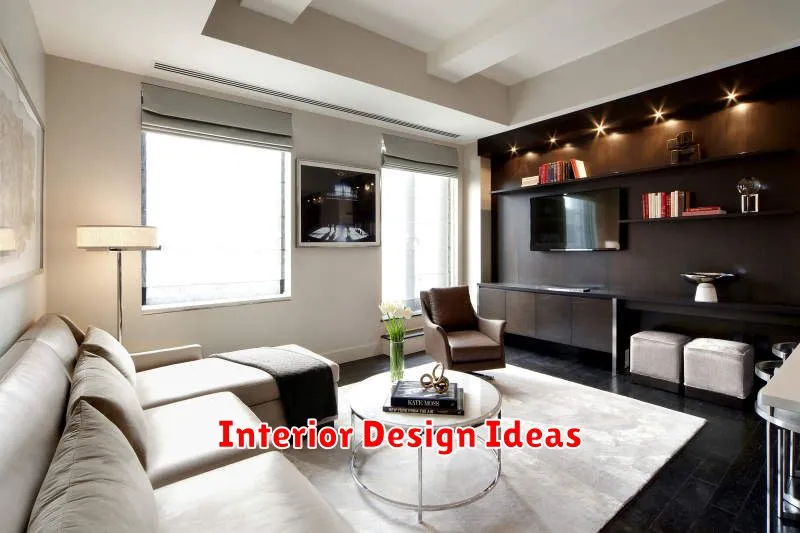Transform your house into a stylish home with these 10 interior decoration ideas. This article explores a range of creative and affordable solutions for enhancing your interior design, from implementing modern color palettes and incorporating statement furniture pieces to maximizing space optimization techniques and utilizing unique lighting solutions. Whether you’re seeking a minimalist aesthetic or a bold, maximalist approach, discover practical tips and inspiring examples to elevate your home décor and create a space that truly reflects your personal style.
Using Neutral Colors for Versatility
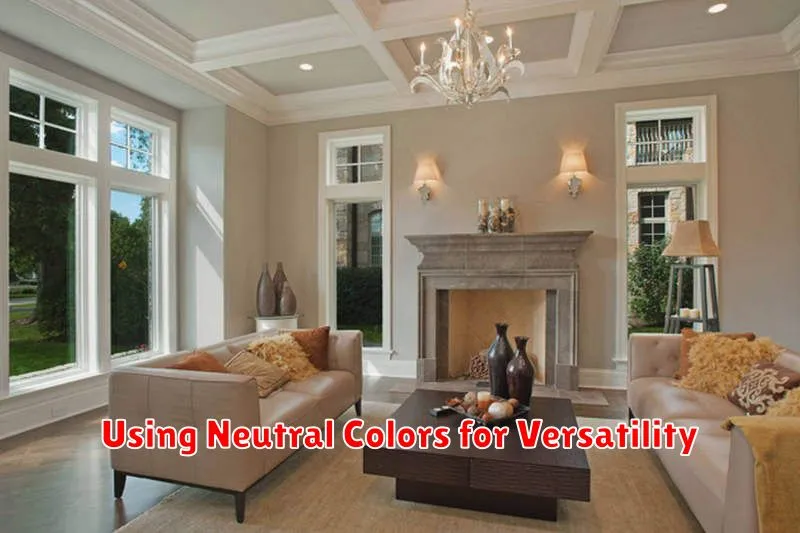
Employing a neutral color palette—think creams, grays, beiges, and whites—provides an incredibly versatile foundation for your interior design. These colors act as a blank canvas, allowing you to easily incorporate bolder accents and change your style without major renovations. The inherent calmness of neutral tones creates a sophisticated and timeless atmosphere.
The versatility of neutral colors extends to various design styles. Whether you prefer minimalist, modern, traditional, or eclectic aesthetics, a neutral base complements each. Easily switch up your decor with colorful throw pillows, rugs, or artwork without clashing with the foundational hues. This adaptability saves time and money in the long run.
Consider texture when working with neutral colors to add visual interest. A variety of textures—from plush velvet sofas to woven baskets—can create depth and prevent the space from feeling flat. Experiment with different fabrics and materials to add visual richness while maintaining the calming effect of your neutral color scheme.
Statement Wall Art to Define Your Space
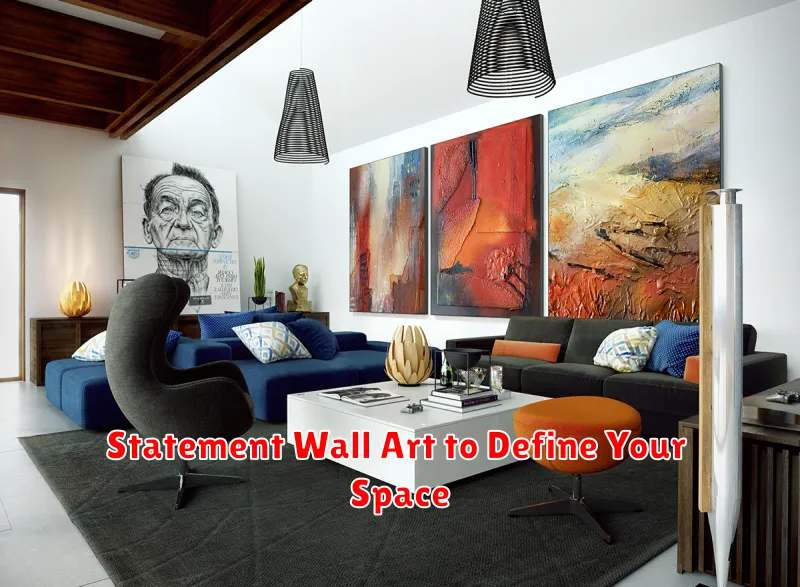
A statement wall art piece can dramatically transform a room’s aesthetic. Consider the overall style of your home; a bold abstract painting might suit a modern space, while a delicate botanical print could complement a more traditional setting. The scale of the artwork is crucial; a large piece can create a focal point, while smaller pieces can be grouped for a curated gallery wall effect.
Choosing the right artwork involves considering color palettes and existing décor. Does the art complement or contrast with your furniture and existing wall colors? The frame is also an important element; a simple frame allows the artwork to take center stage, while an ornate frame can add a layer of visual interest. Think about the mood you want to evoke; calming landscapes for relaxation or vibrant, energetic pieces to energize a space.
Ultimately, statement wall art is a powerful tool for self-expression. It reflects your personal style and creates a unique atmosphere within your home. Don’t be afraid to experiment with different styles, mediums, and sizes until you find the perfect piece to define your space and complete your interior design scheme. Remember that the placement of the artwork is also important; consider the height and the surrounding elements.
Lighting Fixtures to Set the Mood
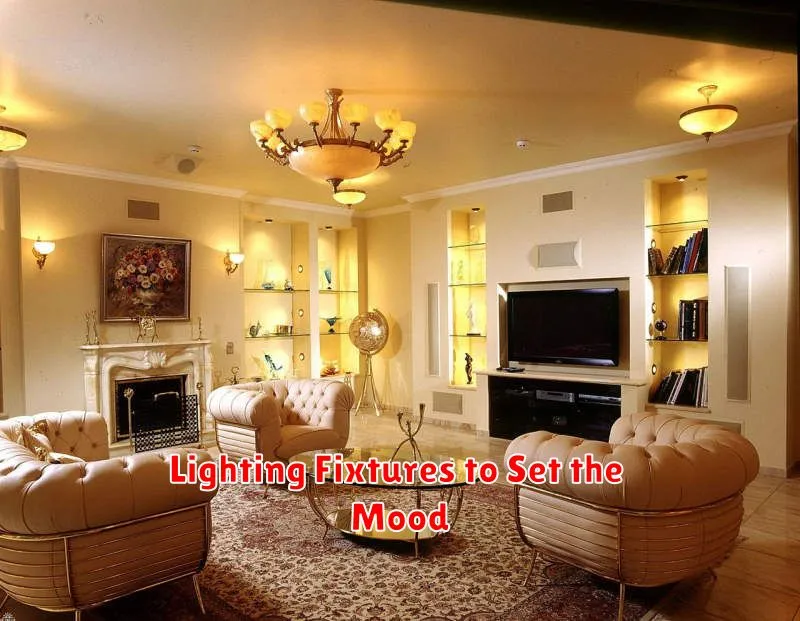
Lighting is crucial in setting the ambiance of a room. Different lighting fixtures can drastically alter the feel of a space, from intimate and cozy to vibrant and energetic. Consider the type of mood you want to create in each room. For instance, a dimmer switch with warm-toned bulbs in a living room promotes relaxation, while strategically placed track lighting in a kitchen provides functional illumination and a modern aesthetic.
Experiment with various fixture styles to achieve your desired effect. Pendant lights offer a dramatic focal point, while table lamps contribute to a more relaxed, layered lighting scheme. Recessed lighting provides ambient light without being visually intrusive, perfect for hallways or bathrooms. The choice of material (e.g., metal, glass, wood) and finish (e.g., matte, polished) also significantly impacts the overall atmosphere.
Remember to incorporate a mix of ambient, task, and accent lighting for a truly well-designed space. Ambient lighting provides general illumination, task lighting focuses light on specific areas (such as a reading nook or workspace), and accent lighting highlights architectural features or artwork. Careful planning and selection of lighting fixtures will enhance your home’s style and create the perfect mood in every room.
Decorative Rugs for Texture
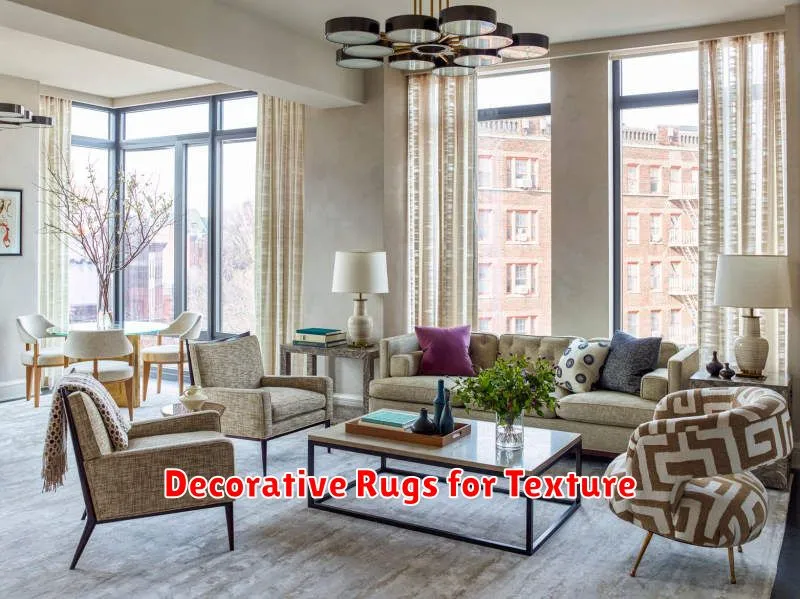
Adding decorative rugs is a simple yet effective way to introduce texture and visual interest to any room. The right rug can instantly elevate the space, adding warmth and depth. Consider the existing textures in your room; a plush rug complements sleek furniture, while a jute rug adds a rustic contrast to modern lines. Choosing the appropriate texture is key to achieving a cohesive and stylish look.
The texture of your rug should complement the overall style of your home. A shag rug brings a sense of luxury and comfort, perfect for a bedroom or living room. A flatweave rug offers a more modern, minimalist aesthetic, suitable for spaces where you want to maintain a clean and uncluttered feel. Experiment with different materials like wool, silk, cotton, or jute to find the best fit for your design.
Remember to consider the size and placement of your rug. A well-placed rug can define a seating area or create a focal point within a larger room. Ensure the rug is appropriately sized for the furniture it complements; leaving sufficient space around the edges for visual balance. The right rug not only adds texture, but also significantly enhances the overall aesthetic appeal of your home.
Minimalist Furniture Arrangement
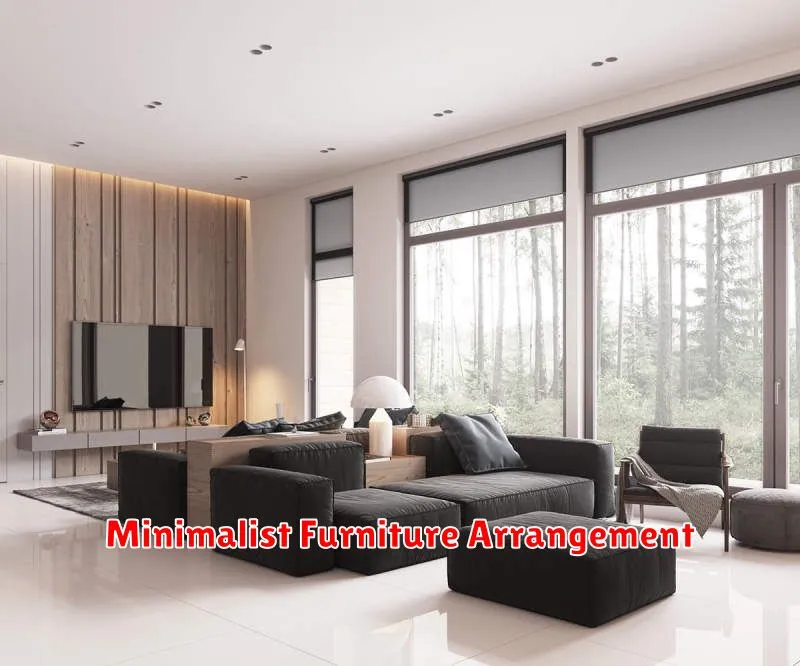
Achieving a stylish minimalist aesthetic involves a strategic furniture arrangement. Prioritize essential pieces only, selecting items with clean lines and neutral colors. Avoid overcrowding the space; instead, focus on creating a sense of openness and flow. Multi-functional furniture can maximize space and efficiency.
Strategic placement is key. Arrange furniture to optimize natural light and create visual balance. Leave ample negative space around each piece to prevent a cluttered look. Consider using a room’s focal point, such as a fireplace or window, to guide your furniture arrangement.
Careful selection of materials is also crucial. Opt for natural materials like wood and linen to enhance the minimalist feel. Ensure that the furniture’s size and scale are appropriate for the room, avoiding pieces that are too large or too small. This balance will contribute to a sophisticated and uncluttered space.
Indoor Plants for Natural Vibes
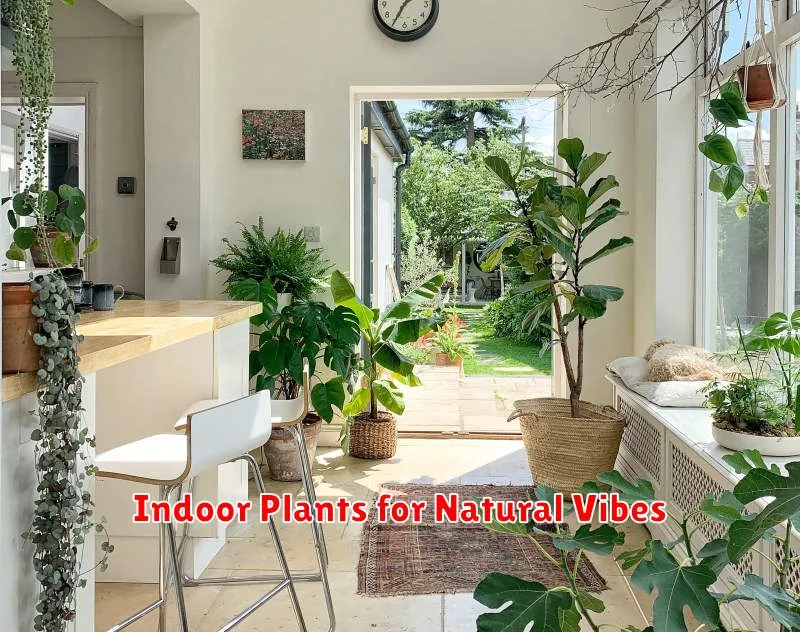
Incorporating indoor plants is a simple yet effective way to infuse your home with a natural, calming ambiance. Strategic placement of various plants can significantly enhance the aesthetic appeal of any room. Consider the size and light requirements of each plant to ensure its thriving and optimal contribution to your décor.
Popular choices for achieving a natural vibe include snake plants, known for their air-purifying qualities and low-maintenance nature, and ZZ plants, which tolerate low-light conditions. Consider adding trailing plants like pothos or spider plants to soften sharp edges and add visual interest. The texture and varying shades of green will create depth and a more organic feel.
Remember that proper care is crucial. Research each plant’s specific needs to ensure their longevity and overall contribution to your home’s natural aesthetic. Regular watering, appropriate sunlight, and occasional fertilizing will maintain their health and vibrancy, creating a truly harmonious and stylish living space.
Mirrors to Create Space Illusions
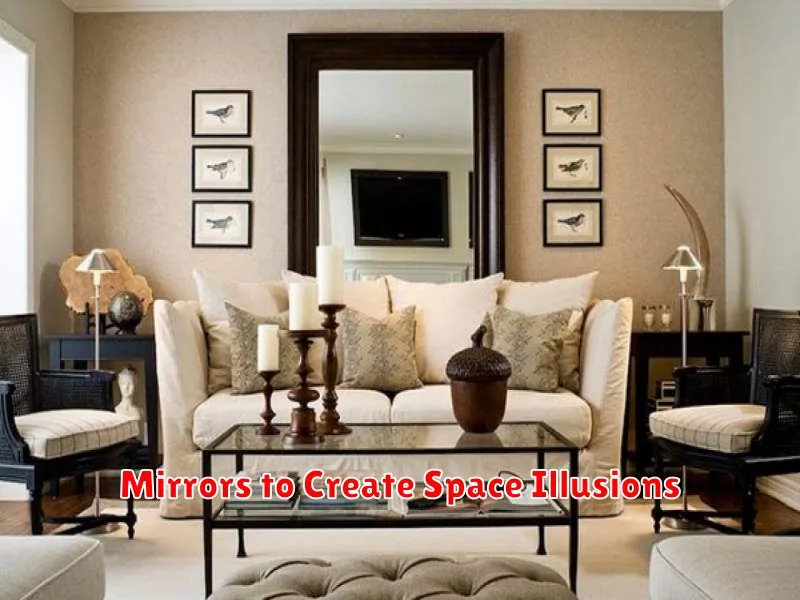
Strategically placed mirrors can dramatically enhance the perceived size of a room. A large mirror positioned opposite a window, for instance, will reflect the outdoor light and scenery, effectively doubling the visual space. This technique is particularly effective in smaller rooms or hallways, creating a sense of openness and airiness.
Consider the size and shape of your mirror. Larger mirrors naturally create a more significant illusion of space. However, a collection of smaller mirrors arranged creatively can also achieve a similar effect, adding visual interest and depth. Experiment with different shapes and frames to complement your existing décor.
Remember to consider the reflection. Ensure the mirror reflects a pleasing view; otherwise, it could backfire and highlight unwanted clutter. A well-chosen spot, reflecting light, well-arranged furniture, or an attractive architectural feature, will maximize the positive impact of using mirrors to create a spacious and stylish environment.
Layered Curtains for a Luxurious Look
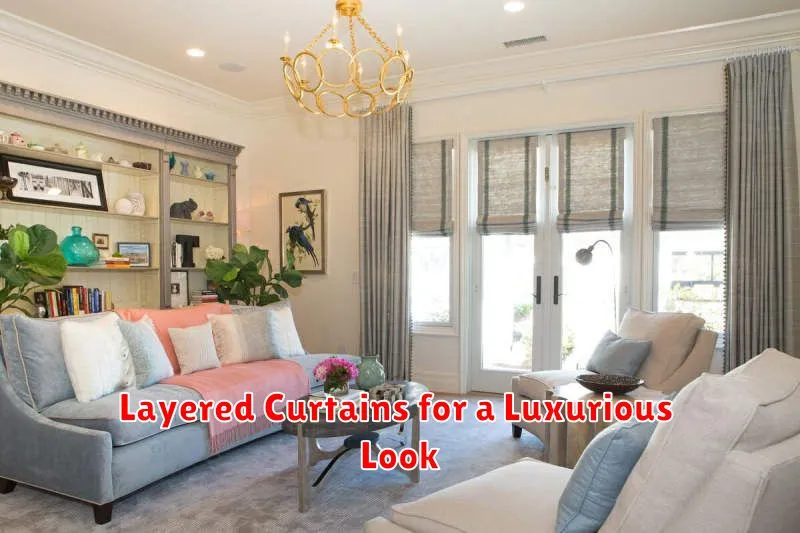
Achieving a luxurious look in your home often involves thoughtful layering of textures and materials. Layered curtains are a key element in this approach. By combining different fabrics, weights, and colors, you can create depth and visual interest, enhancing the overall elegance of a room.
Consider using a sheer, lightweight fabric like voile or linen as a base layer to filter light softly while maintaining privacy. Over this, add a heavier, more substantial curtain panel made of velvet, brocade, or a rich linen blend for added warmth, texture, and light control. The interplay of these layers adds a sophisticated touch to the window treatment.
Color coordination is crucial. Choose colors that complement your existing décor and create a cohesive look. Consider using subtle variations in shades of the same color or contrasting colors that harmonize beautifully. Remember to pay attention to the hardware; elegant curtain rods and finials can further enhance the luxurious feel of your layered curtains.
Accent Pillows for Pops of Color

Incorporating accent pillows is a simple yet effective way to inject personality and vibrancy into any room. These versatile decorative elements offer a powerful means of adding pops of color, seamlessly complementing existing palettes or introducing entirely new ones. Strategic placement can dramatically alter the feel of a space, from a serene and calming atmosphere to a bold and energetic one.
Consider the existing color scheme of your room when selecting accent pillows. Choose colors that either complement the dominant hues for a cohesive look or opt for contrasting shades to create a visually striking effect. The texture of the pillow fabric is equally important; a mix of textures adds depth and visual interest. Experiment with different fabrics like velvet, linen, or cotton to achieve the desired aesthetic.
Beyond color and texture, the size and shape of your accent pillows also play a crucial role. A mix of sizes and shapes prevents monotony and allows for greater creative expression. For instance, a combination of large square pillows, smaller rectangular ones, and round throw pillows can create a layered and sophisticated look. Remember to maintain a sense of balance and proportion to avoid overwhelming the space.
Open Shelving for Decorative Displays
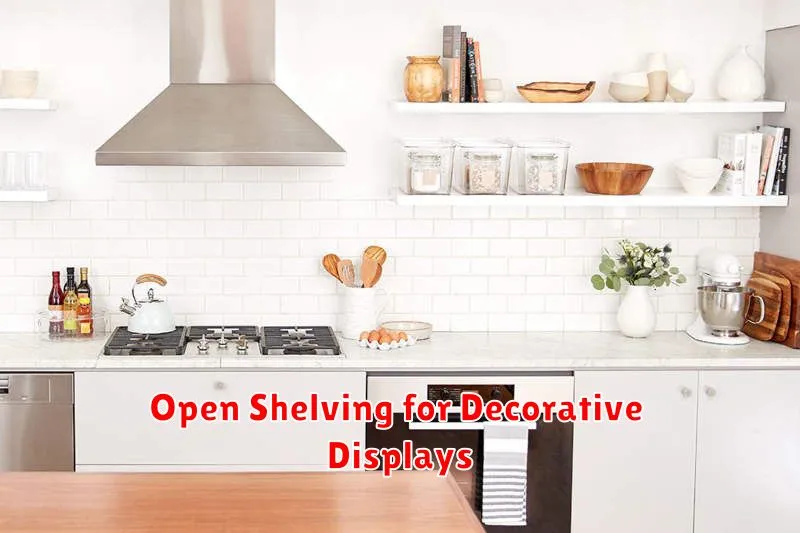
Open shelving offers a versatile and stylish solution for showcasing decorative items. Strategic placement of shelves, considering both height and wall space, is key to maximizing their visual impact. Consider the flow of your room and avoid overcrowding shelves to maintain a clean and elegant aesthetic.
The type of shelving you choose significantly influences the overall look. Materials such as wood, metal, or glass each offer a distinct feel, allowing you to complement your existing decor. The color and finish of the shelves should also be carefully considered for optimal integration into the room’s color palette.
Curating your display is crucial. Group similar items together, vary heights and textures, and incorporate negative space to prevent a cluttered appearance. Don’t be afraid to experiment with different arrangements until you achieve a balanced and visually appealing display that reflects your personal style. Adding decorative objects such as books, plants, or artwork will enhance the aesthetic appeal.

